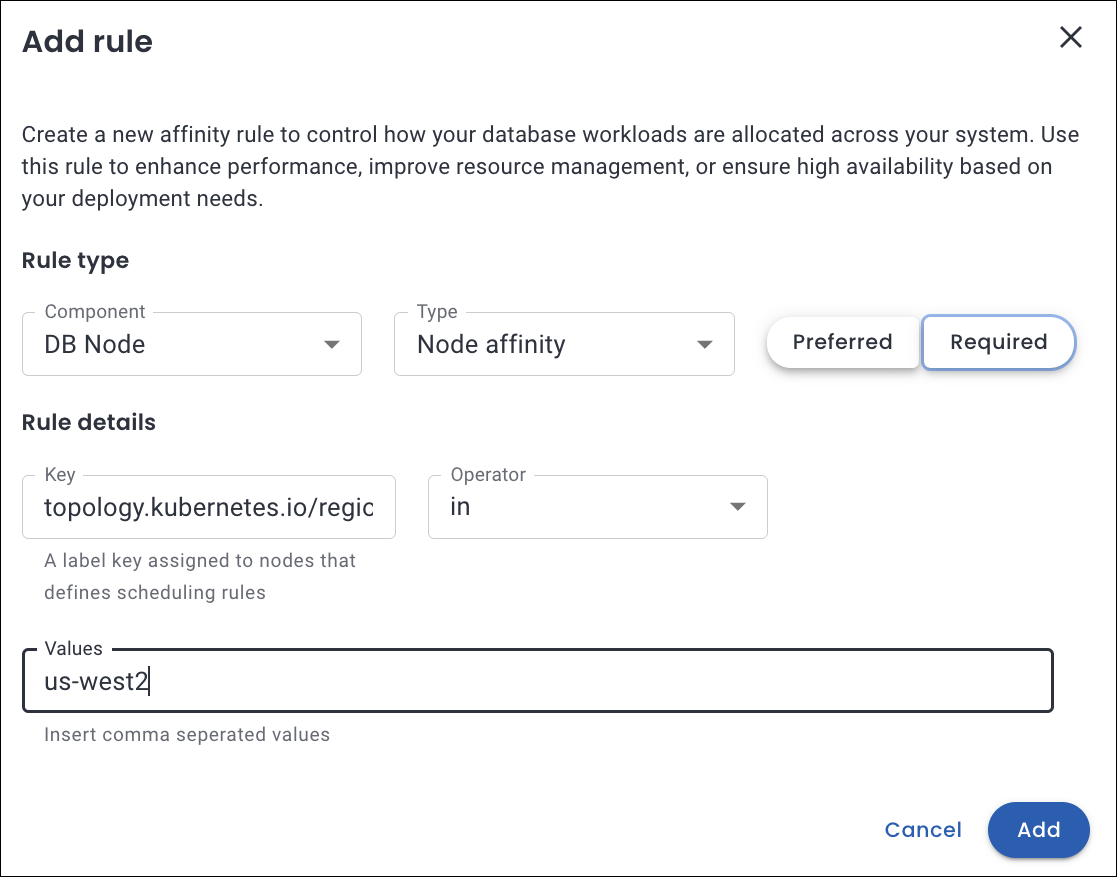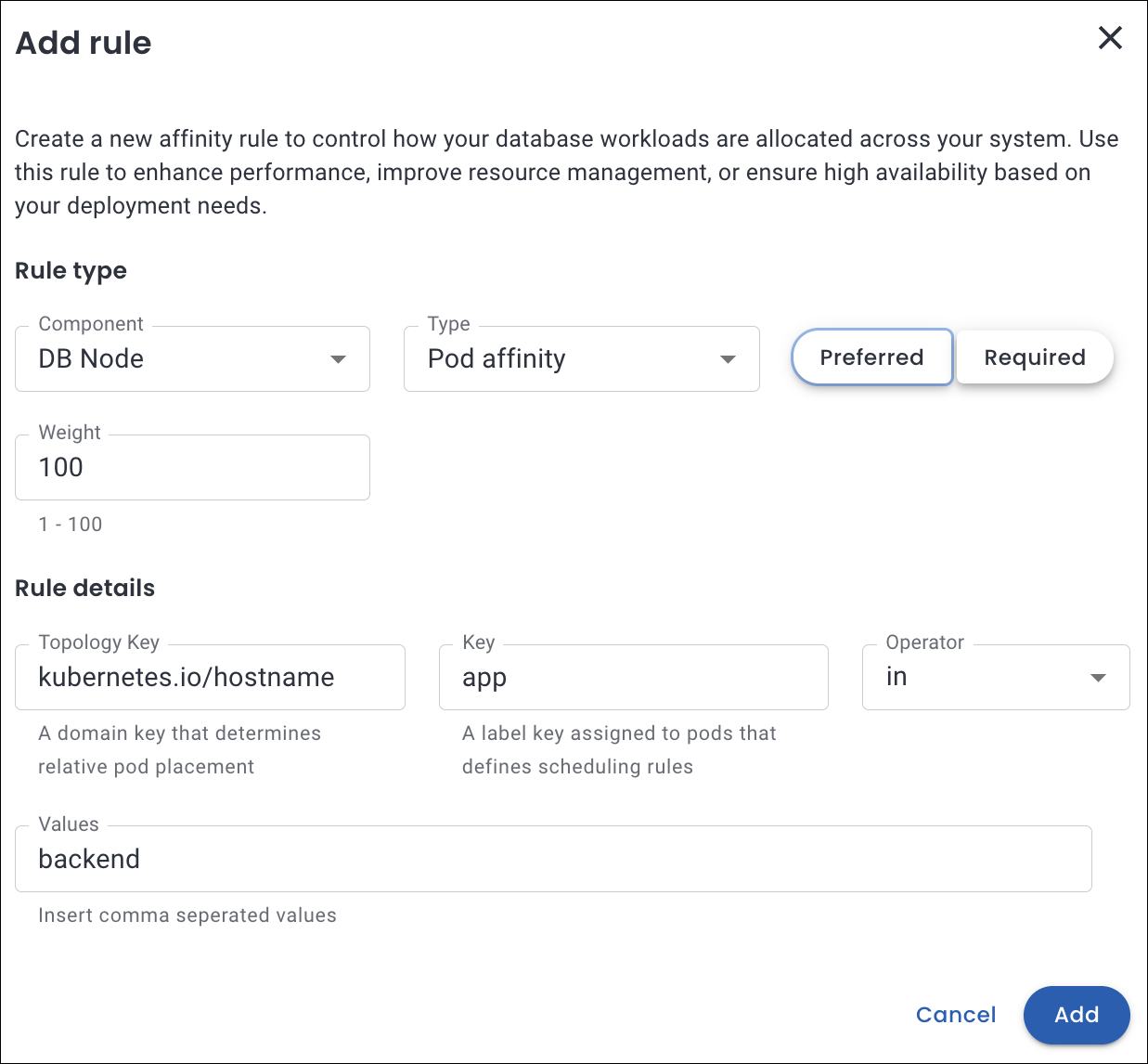Use cases for Pod scheduling policies¶
Here are several detailed use cases for affinity that highlight its diverse applications and the numerous benefits it offers across various contexts.
Node affinity: Regional scheduling¶
Let’s consider a use case in which workloads are distributed based on performance requirements, fault tolerance, and regional specifications across designated zones or areas.
You need to run a workload in the us-west2 region for latency optimization and to meet specific compliance requirements.

What happens under the hood
- It ensures that the pod is scheduled only on nodes in the us-west-2 region, as defined by the
topology.kubernetes.io/regionnode label. - For the rule to be applicable, it is essential that the node possesses a label such as
topology.kubernetes.io/region: us-west-2. If no nodes correspond to the specified label, the pod will remain unscheduled.
Pod anti-affinity: Pods scheduled apart¶
Let’s consider a use case that ensures the scheduler distributes the different database pods across various Kubernetes nodes, which enhances fault tolerance in the event of node failure.

What happens under the hood
- The pod will not be scheduled on nodes that contain pods labeled with
app=haproxy. - If no nodes match, the pod will not be scheduled until a suitable node becomes available.
Pod affinity: Pods scheduled on the same node¶
Let’s consider a use case that ensures that the scheduler distributes the different database pods on the same Kubernetes node.

What happens under the hood
The scheduler will prefer to place this pod on a node where other pods with the label app=backend are already running.